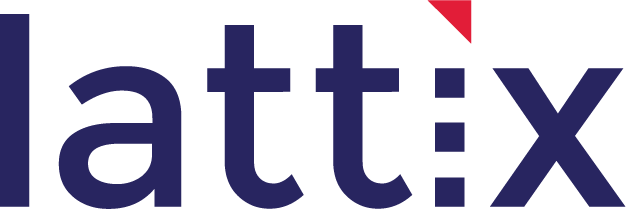Release 3#
Lattix LDM Release 3.5.4#
Bug Fixes#
Fixed ldm.exe and ldc.exe to load latest Java Runtime.
Changed format of LDM/LDZ file to fix I18N issues.
Improved Understand Module error messages.
Lattix LDM Release 3.5.3#
Bug Fixes#
Fixed Understand Ada licensed element count.
Better support for Understand module evaluation for current Understand licensees.
Fixed bug in Linux shell script affecting Understand module (LD_LIBRARY_PATH).
Changed startup scripts to set PATH for loading Understand libs.
Lattix LDM Release 3.5.2#
Improvements#
A new module has been added to support “Understand for C++”.
A new module has been added to support “Understand for Ada”.
A new module has been added to support ModelMaker Tools for Delphi.
Lattix LDM Release 3.5.0#
Improvements#
Additional options added to the Spring plugin.
Option to create subsystem for module name in multi-module DSMs.
Added support for localization.
Dependency Filtering and Atom Kind Filtering dialogs combined.
Metrics simplification and correction.
Improved memory usage during update.
Improved New Project Dialog performance with large directories.
Fixed problem running LDC from headless Linux.
Fixed problem related to Eclipse License Dialog not comming up.
Fixed problem related to C/C++ escape characters.
Lattix LDM Release 3.1.6#
Improvements#
New option to Java Module to ignore duplicate classes from different jars.
Bug Fixes#
Fixed module options available from command line.
Lattix LDM Release 3.1.5#
Improvements#
BSC now supports “member level” dependencies.
Bug Fixes#
Subsystem editing has been enabled for “leaf” subsystems.
LDC violations are now reported at the correct source subsystem.
Lattix LDM Release 3.1.0#
Improvements#
LDC Enhancements to support web reporting.
Lattix now supports a module for understanding the dependencies associated with a Spring Framework Configuration.
Bug Fixes#
Fit to size now expands and contracts to the correct size.
Hibernate Module correctly deals with inner classes and columns.
Lattix LDM Release 3.0.6#
Bug Fixes#
Fixed partitioning for multiple jar files with duplicate class files.
Lattix LDM Release 3.0.5#
Improvements#
Conceptual Architecture creation has been improved.
Oracle module has been improved.
LDC command line options have been updated.
Bug Fixes#
Fixed memory leak when closing project.
Fixed problems with manual dependencies.
Lattix LDM Release 3.0.2#
Multi-module Support: This allows users to combine dependencies from different domains in one view. For instance, users can combine the dependencies between java modules and the Oracle database. They can then view the impact of changes to the database on their program.
New Module for Oracle: Lattix LDM can now be used to create dependency models for the Oracle database. You can now see the dependencies between different elements of the database such as tables, stored procedures, schemas etc. You can also create rules for architecture governance of the database.
Hibernate Module: We have added a new module (which is part of the Java suite). This module allows users to visualize, communicate and manage the architecture of related java classes and database elements. Furthermore, users can use the multi-module capabilities to create a big picture of not just the application but the interaction of the application with the database itself.
LDI Module: This module allows a user to create and maintain the architecture of systems with their own sources of dependencies. Lattix LDM also comes with a developer’s kit that enables users to add their own custom modules into Lattix LDM. In addition, Lattix now provides a utility which enables an excel spread sheet to be converted into an LDI file that can be loaded into Lattix LDM.
Reports: Reports can now be generated in xml, html in addition to xls and csv format. These reports can now also be generated from the LDC server automatically. Users can now make these reports available over the web using html export.
Impact Analysis: Users can mark the subsystems that are changed and then look at a “Uses”, “UsedBy”, and “Uses and UsedBy” DSM. This allows them to focus on simply the subsystems they care about.
Filtering Extensions: Filtering has been extended so it can now be done on not just dependency kinds but also on subsystem types. For instance, users can quickly see all table - table dependencies or all class-interface dependencies.
File mapping during update has been improved.
The BSC plugin has been simplified. The BSC plugin will not show dependencies associated with null context.
User Interface Improvements:
There is a new tab for Information. The old Info area has been removed. The new tab provides better and improved information for the selected system.
There is a new project dialog which allows users to create projects from multiple modules, if necessary.
The Usage Area uses color in the same way as a DSM to simplify navigation.
Classification is now called tagging which has been simplified and improved.
A new search capability adds a new search tab in the properties areas. You can go from an element in the search tab to the DSM by double clicking on a leaf element or by right clicking and bringing up a menu item.
You can select see the aggregated results in the usage tab by selecting multiple cells in the DSM.
You can configure the DSM to show you strengths and percentages in the identity diagonal.
There is a new cell menu item to delete existing rules on a cell.
Menus have been re-organized with a new Tools menu.
There is a “fit- option in zoom which allows the DSM and the conceptual architecture to fit into the available space.
A progress bar is now put up when loading ldz and ldm files.
You can select multiple items in the rules violation tab to create rules for them.
You can double click on a work list item to bring up the worklist editor; you can select multiple items in a worklist to delete them.
Conceptual architecture now supports rule lines.
